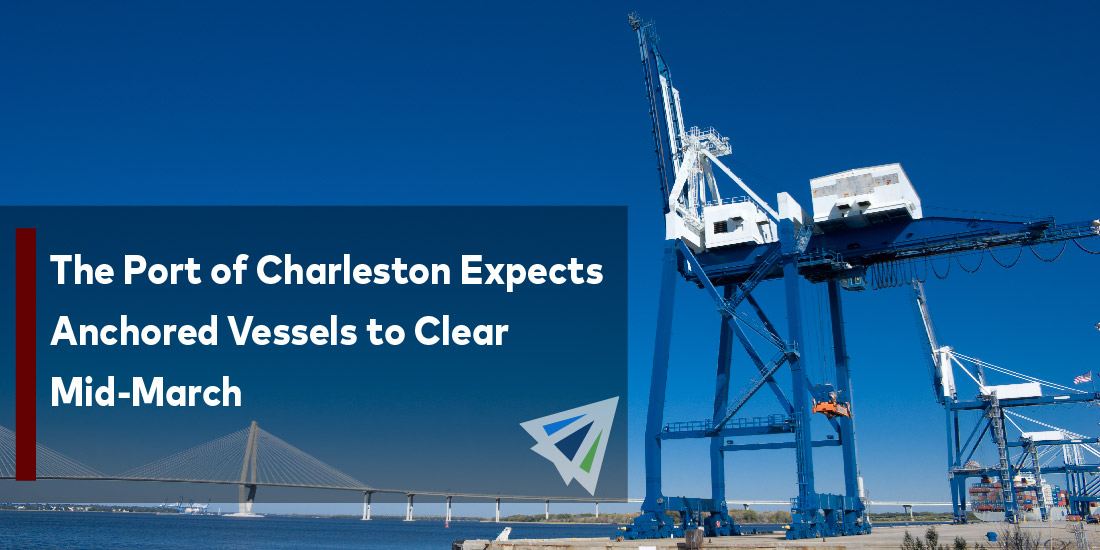The Port of Charleston Expects Anchored Vessels to Clear Mid-March
Everything in the international shipping industry seems weeks behind where it should be, and it’s a result largely of disruptions at one point in the supply chain. After all, that’s how international shipping works. Every step of the process is dependent on preceding and following tasks. Disruptions anywhere in the supply chain create bottlenecks for future activities, and ripple effects backwards.
The Port of Charleston is no exception. It has been experiencing severe congestion off the coast, with 20 vessels anchored along the bay. Reports have it that most of this congestion is caused by importers allowing their containers to dwell for several days at the port before picking them up. In return, this creates gridlocks on port grounds and restricts available resources for docking, unloading, and organizing container ship cargo.
Congestion at Port of Charleston
The South Carolina Ports Authority (SC Ports) is estimating that it will take around six weeks to dock and unload the vessels at anchor, and it urges importers to pick up their containers quickly in order to reduce the average seven-day delay for vessels.
The lack of urgency for importers to pick up containers has resulted in nearly 7,500 containers dwelling for over two weeks on port grounds. According to the port CEO, this number should not exceed 1,000 containers. A similar issue was seen in southern Californian ports of Long Beach and Los Angeles, where they implemented fees for long-dwelling containers which largely solved the issue.
These numbers average out to approximately one in three containers that end up sitting on port grounds for over two weeks. The overall average dwell time of containers at the port is around ten days, which remains a significant increase from the previous average of four days (pre-pandemic). Of course, all of this comes amidst a drastic increase in import activity in the U.S.
Congestion Relief Berthing Strategy
To deal with the congestion, berthing delays, and unloading vessels, the Port of Charleston has begun prioritizing container ships that will take more containers out of the port than it drops off. For example, two ships each with 2,000 containers may be waiting at anchor. However, if one of them plans to take 3,000 containers from the port when it leaves, while the other only plans to take 1,500, the first ship will be prioritized, as it will create an extra 1,000 containers of room for future unloading activities.
The port has also begun using four cranes per vessel to unload containers. In the past, it used five cranes, but once massive import congestion hit the port, they begun using two to three cranes to slow down the unloading speed as the terminals didn’t have enough time to organize and clear other containers. So, while Charleston port is not back to complete efficiency, it has taken many steps in the right direction.
Contact our team at InterlogUSA for more information regarding this topic. We are happy to field any questions or inquiries you may have with how it can affect your specific situation. Additionally, check out our weekly market updates to stay up to date with relevant freight news and developments across the industry.
